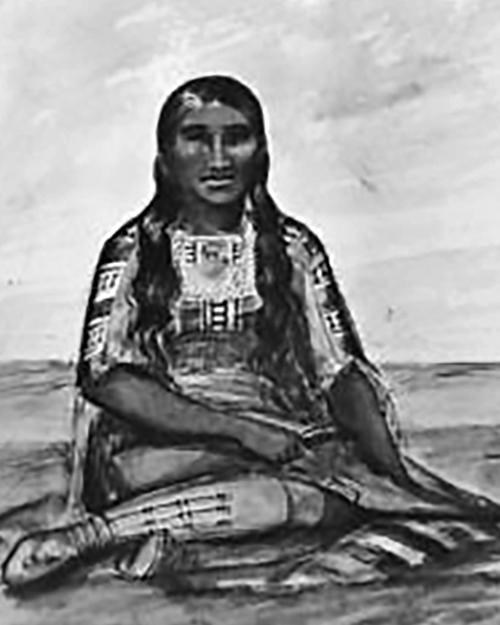Last updated: June 19, 2024
Person
Mestaa'ėhehe (Owl Woman)

Drawing/Lieutenant James Abert/Wikimedia Commons
Mestaa'ėhehe (Pronounced Mes-ta-heh), also known as Owl Woman, lived with one foot in the white world and the other in that of the Cheyenne. Born during a time of increasingly strained relationships between Native Americans and white colonizers, Owl Woman is credited with nourishing peace on the Colorado plains.
Owl Woman was born around 1810. She was the eldest daughter of a powerful Cheyenne tribal leader known as the “Keeper of the Arrows.” This gave her special status within the tribe. Her social status made her an attractive prospective bride for William Bent, a Santa Fe Trail trader and the founder of Bent’s Fort.
William Bent had developed a strong relationship with the Cheyenne throughout 1820s and early 1830s. It was the Cheyenne who advised him to build a fort along the Arkansas River and the Santa Fe Trail in what is now southeastern Colorado. Bent’s Fort was completed in 1833. Soon after, Bent sought to strengthen his relationship with the Cheyenne (and Arapaho) through marriage. From the perspective of Owl Woman’s father, Bent’s position as the owner of the largest trading post on the Colorado plains likely made him an attractive match for Owl Woman as well.
In the mid-1830s, Owl Woman and Bent were married at Bent’s Fort. Together, they had four children – Mary, Robert, George, and Julia. Owl Woman’s arrival greatly benefited Bent and the fort. She provided interpretation and invaluable insight into the customs of the Southern Cheyenne. It is said she even nursed Bent back to health from a serious illness in the 1840s. Quite the innovator, she is thought to have blown broth into Bent’s swollen throat using a hollow quill. She is most remembered for her talent and skill as a mediator between Native Americans and white traders and soldiers.
Owl Woman died around 1847 likely due to complications of childbirth, but the patches of peace she nurtured amidst a world of division are still remembered today. In 2021 a mountain southwest of Denver was named in her honor.
